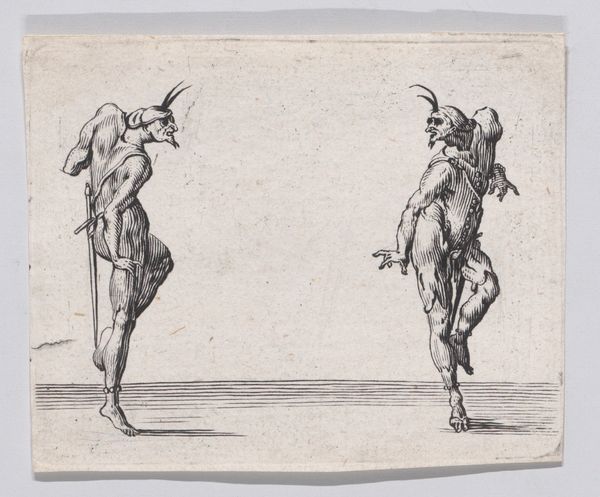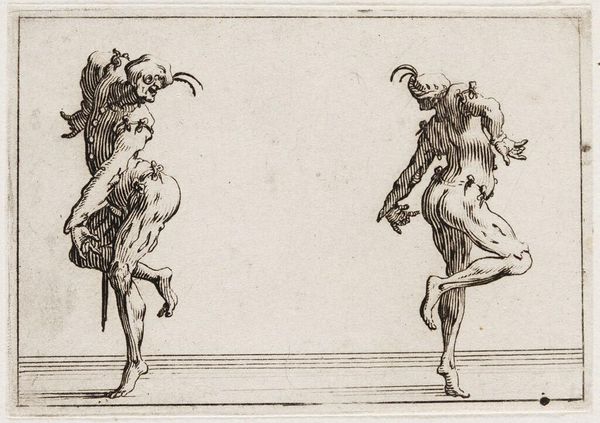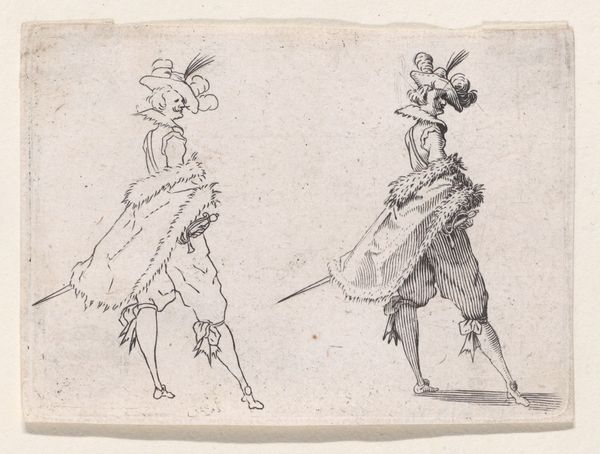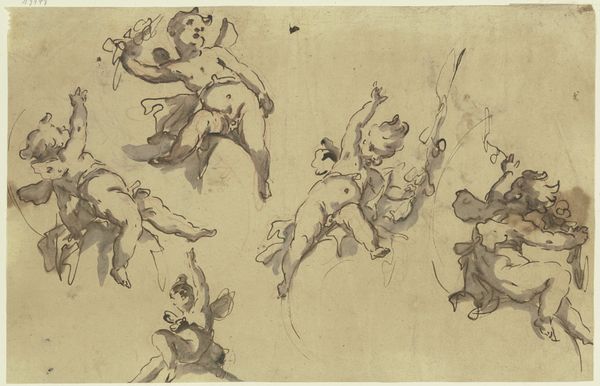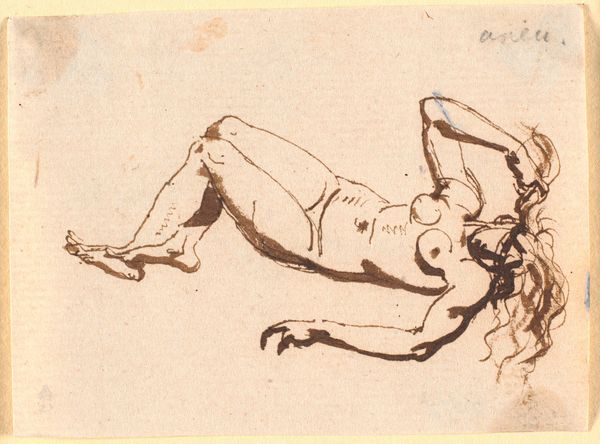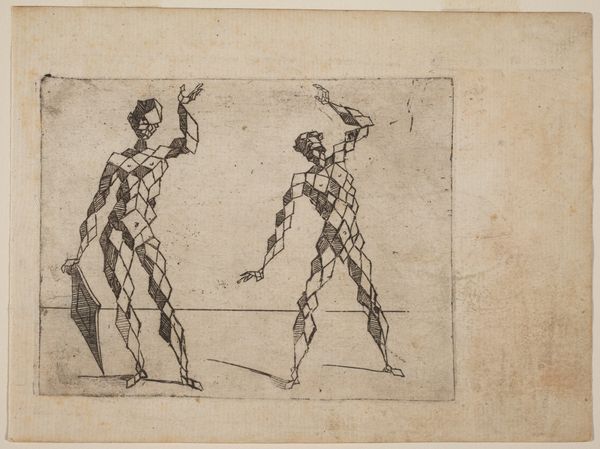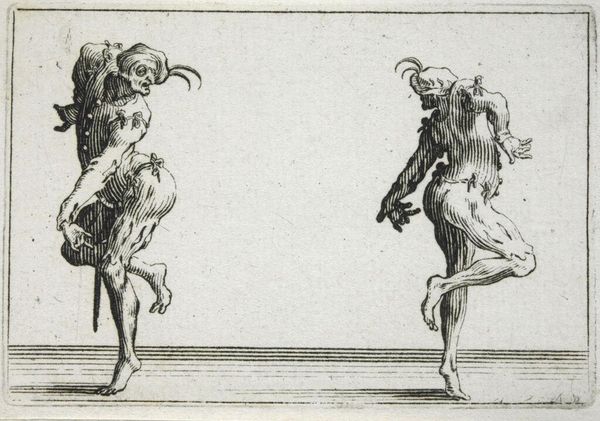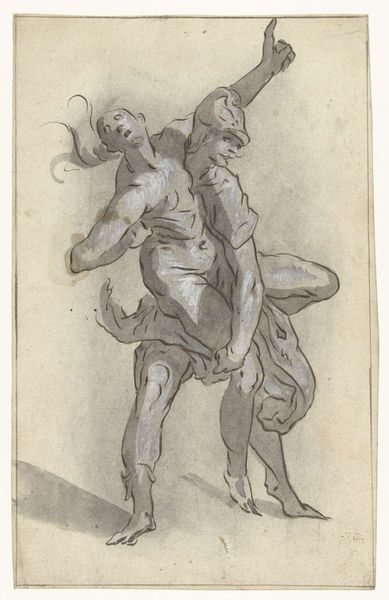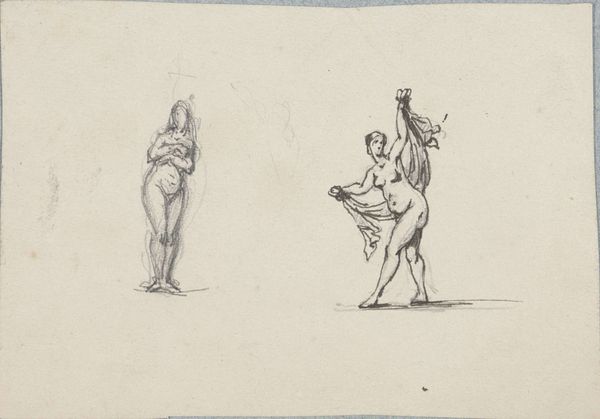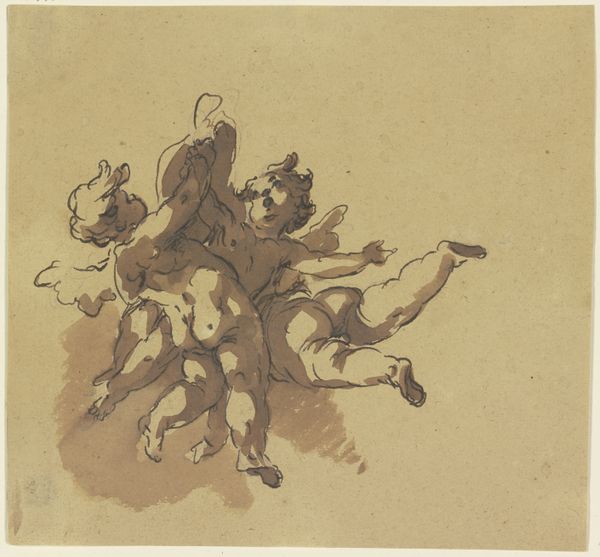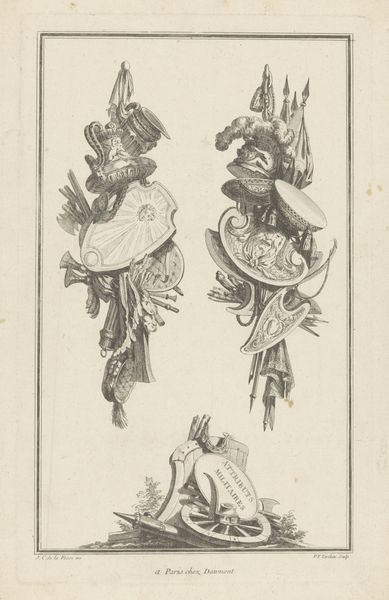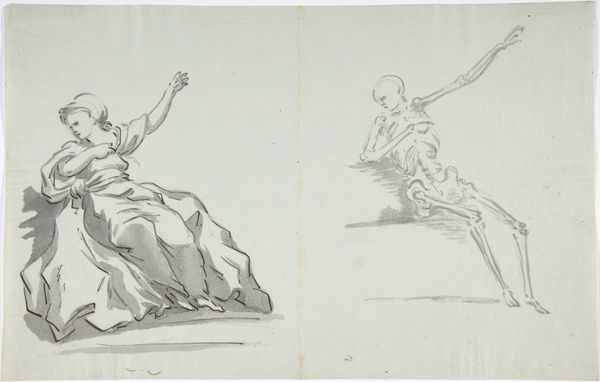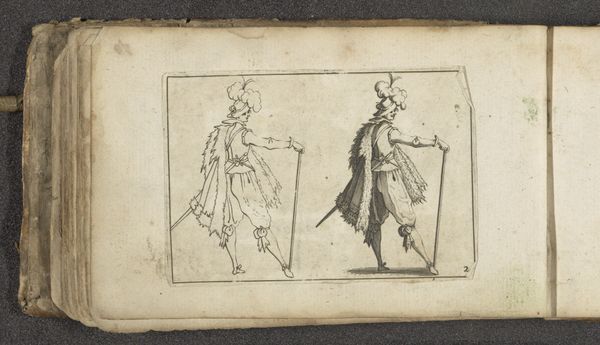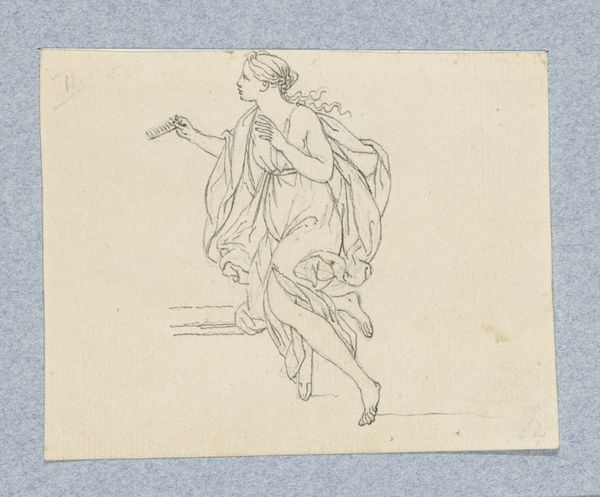
Reverse Copy of Les Deux Pantalons se Tournant le Dos (Two Men in Pantsuits Turned Away from Each Other), from "Les Caprices" 1620 - 1700
0:00
0:00
Dimensions: Sheet: 2 3/8 x 3 1/16 in. (6 x 7.7 cm) Plate: 2 1/4 x 2 15/16 in. (5.7 x 7.4 cm)
Copyright: Public Domain
Curator: Immediately, I see isolation despite the presence of two figures. They’re trapped, contained in their own individual spaces. Editor: This etching, thought to be from somewhere between 1620 and 1700, comes from a series called “Los Caprichos," and what we see here is a later, reversed copy titled "Two Men in Pantsuits Turned Away from Each Other." I’m drawn to the way this print highlights the manual labor of the printing process, each line meticulously etched. You can almost feel the pressure of the tool on the copper plate. Curator: Indeed. I notice the men are both adorned in what appear to be exaggerated theatrical costumes. The repetition of similar costuming suggests some shared context, maybe even a societal class, while the averted gazes suggest internal or external conflict. Editor: The way the print renders the fabric’s texture through line work fascinates me. It makes me wonder, what was the actual cloth worn by the original subject of this "caprice"? How would its weave and drape affected its appearance and perception? Curator: Let’s consider their body language; poised precariously on one leg, in the midst of…is it a dance, a stumble? Their unstable posture emphasizes the underlying social instability they portray. There’s a sardonic edge. Editor: The choice of etching too. Etching allows for a unique textural quality compared to engraving. Consider the acids, the resists… it's a direct connection to alchemical practice and a departure from traditional "high art" craft boundaries, as each print holds a mark of mechanical reproduction. The existence of a reversed copy suggests its widespread use in disseminating specific social caricatures. Curator: Absolutely, and it is precisely these figures which, in turn, may tell us more. Observe their hats – the implied mockery in their plumes, perhaps aimed at superficial aristocratic trends? The symbol would certainly play into this mood. Editor: Seeing it here at the Metropolitan Museum, we’re viewing a version filtered through time, recontextualized. The materials—the paper, the ink—each has a story, a production chain connecting back to its origin. I'm reminded that even a 'reversed copy' has its own unique material signature and history of consumption. Curator: An echo resonating centuries later, capturing eternal facets of the human experience—vanity, conflict, isolation, displayed for us today. Editor: Yes. By carefully inspecting the paper quality, ink composition, and signs of wear, we glean tangible details connecting us to past workshops and their ripple effect through trade and taste across eras.
Comments
No comments
Be the first to comment and join the conversation on the ultimate creative platform.
